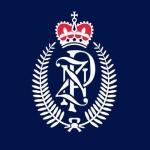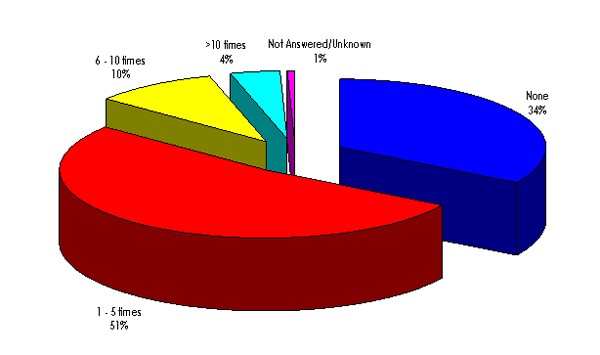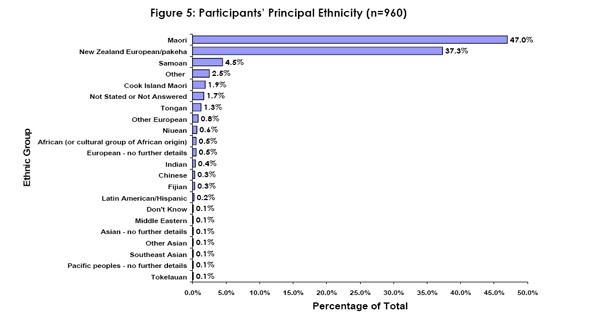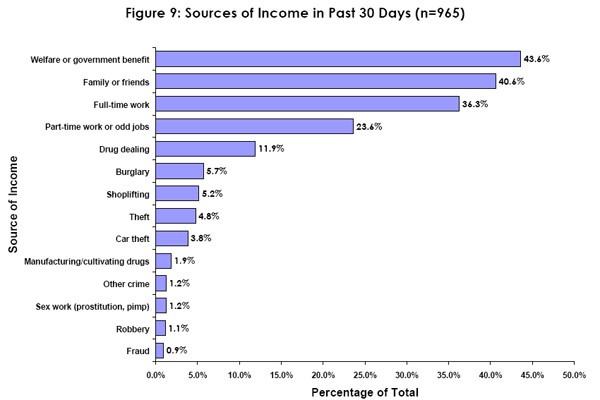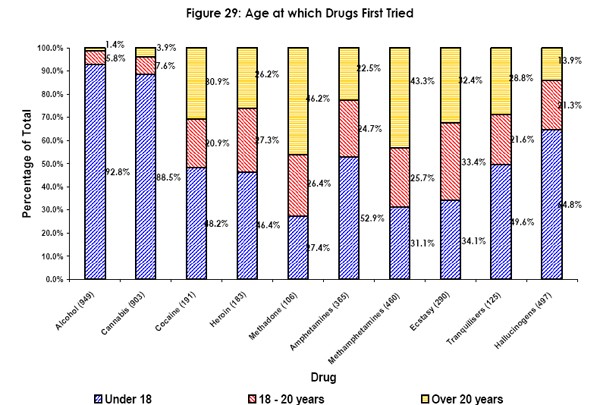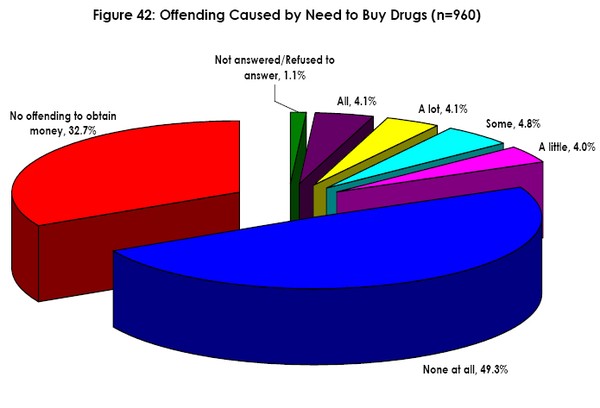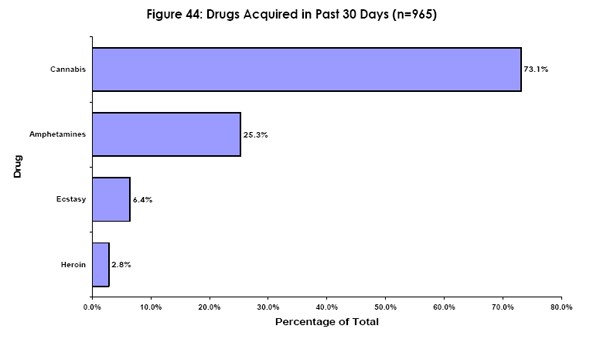NZ Arrestee Drug Abuse Monitoring project annual report
The NZ Arrestee Drug Abuse Monitoring (NZADAM) project report for 2006 is available.
NZADAM measures the drug and alcohol use among people who have been recently apprehended by Police for any reasons and are not just drug specific.
The monitoring project has completed its first year of research in four police watch houses, Whangarei, Henderson, Hamilton and Dunedin.
NZADAM is managed by Police who fund the project. Police contract Health Outcomes International who interview arrestees and analyse the data.
The data being collected is used by Police and The National Drugs Intelligence Bureau in a wide range of analysis.
All detainees volunteer to take part in the study and their information is confidential.
Download full report
New Zealand Arrestee Drug Abuse Monitoring (NZ-ADAM) Annual Report 2006
71 page PDF, 487 KB
New Zealand Arrestee Drug Abuse Monitoring (NZ-ADAM) Annual Report 2006
simple web page, 964 KB
Executive Summary
The NZ-ADAM ProgrammeNew Zealand Arrestee Drug Abuse Monitoring (NZ-ADAM) is a programme which seeks to measure drug and alcohol use among people who have recently been apprehended by police.
NZ Police obtained funding for a one-year initial pilot of NZ-ADAM at four sites (Whangarei, Henderson, Hamilton and Dunedin), to be followed by a three-year extension should the pilot prove to be successful and useful.
Health Outcomes International (HOI) was contracted by NZ Police to conduct the pilot.
The programme is managed from the Office of the Commissioner and is informed by a multi-agency Advisory Committee comprising members from Ministry of Health, Ministry of Justice, Department of Corrections, Accident Compensation Corporation, Alcohol Advisory Council and NZ Police.
Data collection for the NZ-ADAM pilot programme commenced at Henderson on 18 April 2005, followed by Whangarei on 21 April 2005, Dunedin on 7 July 2005 and Hamilton on 12 July 2005.
Potential participants in the NZ-ADAM programme comprise all persons detained at the participating watch houses at the time the interviewers are present, except those who meet the following exclusion criteria:
Persons less than 17 years of age.
Persons unfit for interview due to the effects of alcohol/drugs/medication.
Persons considered unsuitable to participate due to mental health issues.
Persons unable to complete the interview due to language difficulties.
Persons considered to possess violent tendencies.
Persons who have been held in custody in excess of 48 hours.
Persons deemed ineligible for other reasons at the discretion of watch house personnel.
This is the first annual report for NZ-ADAM and covers the operation of the first full year of the NZ-ADAM programme in which all four participating sites (Whangarei, Henderson, Hamilton and Dunedin) were covered. Data collection for this period commenced on 1 July 2005 and continued through to 30 June 2006.
Programme Throughput and Participation
A total of 2,206 detainees were available to participate in the NZ-ADAM data collection process throughout the year. Of these, 965 met the inclusion criteria and agreed to be interviewed and 950 completed the entire interview process. A total of 561 (59%) interviewees agreed to provide a urine sample, and of these 557 provided samples acceptable for analysis.
The proportion of available detainees who proceeded to interview varied across the four sites, from 35% at Henderson to 58% at Dunedin. Reasons for the variation in participation rates included such factors as detainee profiles, how busy the watch house was at the time the interviewers were present and watch house staff attitudes towards the study.
Demography
Of the 965 interviewees, 84.7% were male and 14.8% were female, mean age 27.5 years (males 27.1 years, females 29.5 years). The majority (60.9%) reported that they were single and had never married (61.7% of males and 55.9% of females). Forty-seven percent reported being New Zealand M�ori, 37.3% identified as New Zealand European/Pakeha and 4.5% as Samoan. Thirty-eight percent had completed some high school but did not complete compulsory years, and 28% completed compulsory high school. Almost 35% were working in full-time employment and a further 11% were working part-time, whilst 26% were unemployed but looking for work and 8% were unemployed and not looking for work.
Employment and Income
The majority (56.8%) of respondents who were employed (either full-time or part-time) worked as manual workers/labourers and a further 25.3% worked as craftsmen/skilled tradesmen.
The most common sources of income in the 30 days prior to detention were welfare or government benefits (44% of respondents), family or friends (41%), and full-time work (36%). Of all sources of income identified, 21% related to illegal activities.
Almost one quarter (24.5%) of participants had received Unemployment Benefits in the last 12 months and 14.7% had received Sickness or Invalids Benefits. However, almost half (43.5%) reported not having received any government benefits in the past 12 months.
Living Arrangements
Almost half (49.5%) of participants reported having lived in someone else�s house or apartment most of the time in the last 30 days, whilst 44.1% reported living in their own house or apartment. Just over half of those interviewed (53.6%) reported that between 3 and 5 persons lived in their household, including themselves. Eighteen percent indicated that they lived in a household of 6 to 10 people and a further 17.4% lived with one other person. Almost two-thirds (65.3%) reported that they had no dependent children, 29.6% reported having between 1 and 3 dependent children and 4.9% reported having more than 4 dependent children.
Drug and Alcohol and Psychiatric Hospital Treatment
The responses indicate that 35% of those interviewed had at some time participated in drug or alcohol treatment programmes and that 5% were currently participating in a treatment programme. Of the 336 participants who reported that they were not currently, but had previously, participated in a treatment programme, 34% reported they had most recently participated in a Rehabilitation Programme/Therapeutic Community, 25% reported attendance at an Outpatient/Counselling Programme, and 16% reported membership of a Support Group. Among those interviewed, 8.1% reported having previously been a patient in a psychiatric ward or hospital for an overnight stay or longer.
Offending
The most common first recorded charge was “Offence against Justice”, 38.8% of all interviewees being charged with this offence, which includes “Breach of Bail”. Other first recorded offence types were “Serious Assaults” (10.1% of participants) and “Theft” (8.8%).
Just over one third (34%) of those interviewed reported that they had not been arrested at all during the previous 12 months; 51% reported having been arrested between 1 and 5 times; and 10% report having been arrested between 6 and 10 times. Almost 4% reported having been arrested more than 10 times in the previous 12 months.
Positive Drug Tests
Of the 557 participants who provided a usable urine sample, 406 (73%) tested positive to one or more illicit drugs. Urinalysis indicated that 59% of the participants providing a usable sample tested positive to one drug, 11% tested positive to two drugs, 2% tested positive to three drugs and 1% tested positive to more than three drugs.
Cannabis was the most commonly detected illicit drug, 69% of the samples testing positive to cannabinoids. Methamphetamines were the second most commonly detected drug (12%). A range of other substances were detected at rates below 2%.
Further investigation of the urinalysis results indicates the following with regard to individual sites:
In Whangarei there has been a slight downward trend in the prevalence of cannabis use but an increase in methamphetamine use. Whangarei had the second highest detection rate for cannabis.
In Henderson, all main drugs exhibited downward trends in use. Henderson was the only site where positive detection of heroin is greater than 2%. This site also had the lowest detected rate of cannabis but the highest detection rate for methamphetamines.
Hamilton exhibited an upward trend in cannabis use with methamphetamine use relatively constant. This site had the highest detection rate for cannabis, but one of the lowest detection rates for methamphetamines.
Dunedin exhibited a steady rate of cannabis use but an increase in the detection of tranquilisers. Dunedin is the only site to show a positive detection rate for tranquilisers greater than 2%, but less than 2% for methamphetamines.
Self-Reported Drug Use
Only 1% of those interviewed reported that they had never tried any drug, including alcohol, and only 5% reported having tried only one drug. Just over a quarter (27%) reported having tried two drugs, but the majority (68%) reported having tried three or more drugs. Alcohol and cannabis had almost universally been tried, by 99% and 94% of participants respectively, and were also the most commonly used drugs in the 30 day and the 48 hour periods preceding detention. Whilst hallucinogens had been tried by more participants (52%) than methamphetamines (48%), amphetamines (38%) or ecstasy (30%), methamphetamines were reported to have been used by more participants (24%) in the last 30 days than hallucinogens and amphetamines (6%) or ecstasy (5%). 9% of participants reporting having used methamphetamine in the 48 hours prior to detention, making it the third most commonly used drug after alcohol and cannabis during this time period.
Of those who had ever tried alcohol, 93% reported having first tried it under the age of 18 years; 89% of those who had ever tried cannabis also reported having first tried it aged less than 18 years. Similarly, large proportions of those who had ever tried hallucinogens (65%), amphetamines (53%), tranquilisers (50%), cocaine (48%), or heroin (46%) had done so for the first time aged under 18 years. Conversely, methamphetamines and methadone were most commonly first tried at over 20 years of age (43% and 46% respectively). First use of ecstasy was evenly distributed across the three age groups.
Alcohol was used by 779 participants at some time during the past 30 days, making it the most widely used drug, but cannabis (used by 694 participants) was the most frequently consumed drug, 59% of users reporting use on 11 or more days out of the last 30 (45% reported using on at least 21 days). Methamphetamines were reportedly used by a relatively large number of participants (227) and also relatively frequently, 34% of users reporting use on 11 or more days in the last 30.
An analysis of the demographic and other characteristics of those who reported the use of cannabis or methamphetamine in the previous 30 days indicated that methamphetamine users had the following characteristics compared to cannabis users:
A lower proportion are male (77% compared to 86%);
Are more likely to be of Maori descent (80% compared to 52%);
Are less likely to be working full-time (24% compared to 32%);
Used for the first time at an older average age (22 years compared to 13 years of age);
Used less often in the last month (on 10 days compared to 17 days); and
Are more likely to sell drugs to others (12% compared to 5% of users).
Site specific analyses indicate that:
In Whangarei, cannabis use exceeded alcohol use in the most recent quarter, although both were showing a slight downward trend, as was self-reported methamphetamine use.
Henderson demonstrated a convergence between the self-reported use of alcohol and cannabis, with both trending slightly downwards. Reported use of methamphetamines was relatively constant over the period.
Hamilton reported an upward trend in the reported use of both cannabis and alcohol over the year, but a slight downward trend in reported methamphetamine use.
Dunedin recorded a convergence between reported alcohol use and cannabis use, with the former trending down and the latter trending upwards. Self-reported methamphetamine use was very low.
Corroboration of Self Reported Drug Use and Urinalysis Results
The corroboration of self-reported drug use and positive urinalysis results was highest for cannabis, 94% of those testing positive also reporting use in the previous 30 days, and 68% reporting use in the previous 48 hours. Among those who tested positive for methamphetamines the corresponding figures were 81% and 54% respectively.
Drug Dependence
Overall, 39% of all participants reported having felt dependent on at least one drug (including alcohol) in the past 12 months. A quarter (25%) of participants indicated that they had felt dependent on cannabis in the past 12 months, whilst 15% reported a dependence on alcohol and 8.5% reported a dependence on methamphetamines.
Drugs and Anger
The drugs most frequently reported to make users more or much more likely to get angry were methamphetamines, alcohol, and amphetamines. Cannabis, methadone and heroin were the drugs most frequently reported to make users less or much less likely to get angry.
Reported Drug Use and Criminal ActivitiesOf the 367 participants detained for an offence “Against Justice” (mainly breach of bail), 90% reported using alcohol in the previous 12 months, 83% reported using cannabis in the previous 12 months and 39% reported using methamphetamines in the previous 12 months, 80% reported using alcohol in the previous 30 days, 77% reported using cannabis in the previous 30 days and 23% reported using methamphetamines in the previous 30 days.
Fifty-one percent of participants reported that they had been using at least one drug at the time of their arrest. Thirty-seven percent reported using cannabis, 21% reported using alcohol and almost 7% reported using methamphetamines.
More than 50% of users of all drugs other than cannabis indicated that their drug use had contributed to their involvement in criminal activity at least a little. Twenty-five percent of cannabis users reported that their drug use contributed to between “some” and “all” of their criminal activities.
Nearly half (49%) of participants reported that “none at all” of their criminal offending was caused by the need to buy illegal drugs and a further third (33%) responded that they did not commit criminal offences to obtain money. However, 17% of participants reported that their offending was caused to some degree by their need to buy illegal drugs.
Buying and Selling Drugs
Half (50.4%) of the participants reported that they had not spent any money on illicit drugs in the 30 days prior to their detention. However, 18% reported spending $100 or less; 7% spent between “$101 and $200”; 10% spent between “$201 and $500”; and 7% spent between “$501 and $1,000”. A small minority, 3.5%, claimed to have spent over $2,000 on illicit drugs in the past 30 days.
Among all participants, 737 (76%) reported that they had acquired (but not necessarily paid for) illicit drugs in the 30 days prior to their detention. A majority (73%) reported having acquired cannabis during this period, 25% reported acquiring amphetamines (including methamphetamines), 6% had acquired ecstasy and 3% heroin. Site specific analyses indicate that:
Whangarei experienced a slight decline in all drugs acquired during the year, particularly amphetamines.
Henderson experienced a decrease in cannabis acquired during the year, heroin and ecstasy also displaying small declines. Amphetamine acquisition was relatively constant.
Hamilton experienced a decline in amphetamine acquisition, and to a lesser extent in ecstasy and heroin acquisition. Cannabis acquisition was relatively constant.
Dunedin experienced an increasing trend in cannabis acquisition, with other drug acquisition rates remaining relatively constant or showing small declines.
The site specific data highlight the fact that drug use and drug acquisition tend to be localised activities occurring in markets that are subject to local conditions and influences.
Visiting a house or flat was the most common method of acquiring cannabis (55% acquired by this method) ecstasy (27%) and amphetamines (including methamphetamines) (33%). Contacting a supplier by mobile phone was also relatively common, 35% of amphetamines, 36% of ecstasy and 15% of cannabis being acquired via this method of contact. A private house or flat was the main location at which drugs were acquired across all drug types, particularly amphetamines.
Eleven percent of all participants reported having sold cannabis, 5.6% reported having sold amphetamines (including methamphetamines) and 1% reported having sold ecstasy. Less than 1% of respondents reported having sold heroin.
Selling drugs was reported to present more risks from Police activity than buying in all drug markets.
The amphetamine market was reported to involve the greatest risk from Police activities whether buying or selling and to be the most violent illegal drug market.
Buying cannabis was reported to be the drug-related transaction at least risk from Police activities.
The cannabis and ecstasy markets were perceived to be the least violent of the four drug markets.
Download full report
New Zealand Arrestee Drug Abuse Monitoring (NZ-ADAM) Annual Report 2006
71 page PDF, 487 KB
New Zealand Arrestee Drug Abuse Monitoring (NZ-ADAM) Annual Report 2006
simple web page, 964 KB
